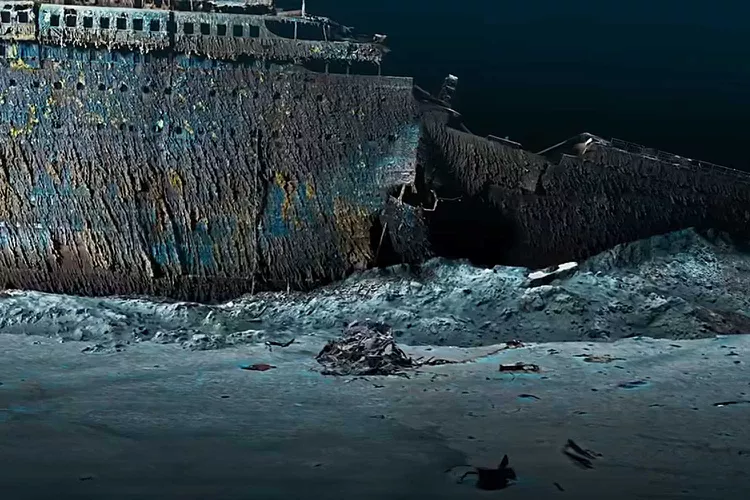A full-sized 3D scan of the ship seems to support eyewitness accounts from survivors
:max_bytes(150000):strip_icc():focal(798x416:800x418):format(webp)/titanic-digital-resurrection-041025-b81abe56a52f4296a5cb82c72b851c56.jpg)
New details have emerged about the Titanic’s final hours.
The first-ever full-sized 3D scan of the ship’s wreckage is being studied in a new documentary called Titanic: The Digital Resurrection. In the film, analysts view the ship’s “digital twin” to gain new insights into the events that occurred on April 14, 1912, in which an estimated 1,500 lost their lives.
The scan reveals that some of the boilers — which produced steam to power many of the ship’s basic functions — were concave at the time that it plunged into the water, suggesting they were still running when the vessel sank, according to the BBC. Additionally, a valve on the deck of the stern was discovered in the open position, which indicates that steam was still powering the ship’s electrical system.
These findings support eyewitness accounts that ship engineers were shoveling coal into the ship’s furnaces in order to keep the lights on for as long as possible as passengers escaped.
:max_bytes(150000):strip_icc():focal(939x452:941x454):format(webp)/titanic-digital-resurrection-2-041025-e9e6b6e6675d4dec9114cd2303a1c77f.jpg)
“They kept the lights and the power working to the end, to give the crew time to launch the lifeboats safely with some light instead of in absolute darkness,” Parks Stephenson, a Titanic analyst, told the BBC before noting that all of the heroic engineers lost their lives.
The scan also shows that the iceberg that collided with the ship, ultimately causing it to sink, caused six small tears in the hull. The punctures were spread across six watertight compartments — while the ship, which was deemed “unsinkable” — was only built to withstand damage to a total of four, per the outlet.
“The difference between Titanic sinking and not sinking are down to the fine margins of holes about the size of a piece of paper,” said associate lecturer in naval architecture, Simon Benson, while speaking to the BBC. “But the problem is that those small holes are across a long length of the ship, so the flood water comes in slowly but surely into all of those holes, and then eventually the compartments are flooded over the top and the Titanic sinks.”
The 3D model was mapped using underwater robots and is composed of about 700,000 images of the wreckage taken from every angle. And while what’s left of the Titanic currently lies at the bottom of the ocean at approximately 12,500 ft. below sea level, the new 3D model will enable analysts to study the wreckage for generations to come — even as the real ship decays over time.
Titanic: The Digital Resurrection is currently streaming on Disney+ and Hulu






